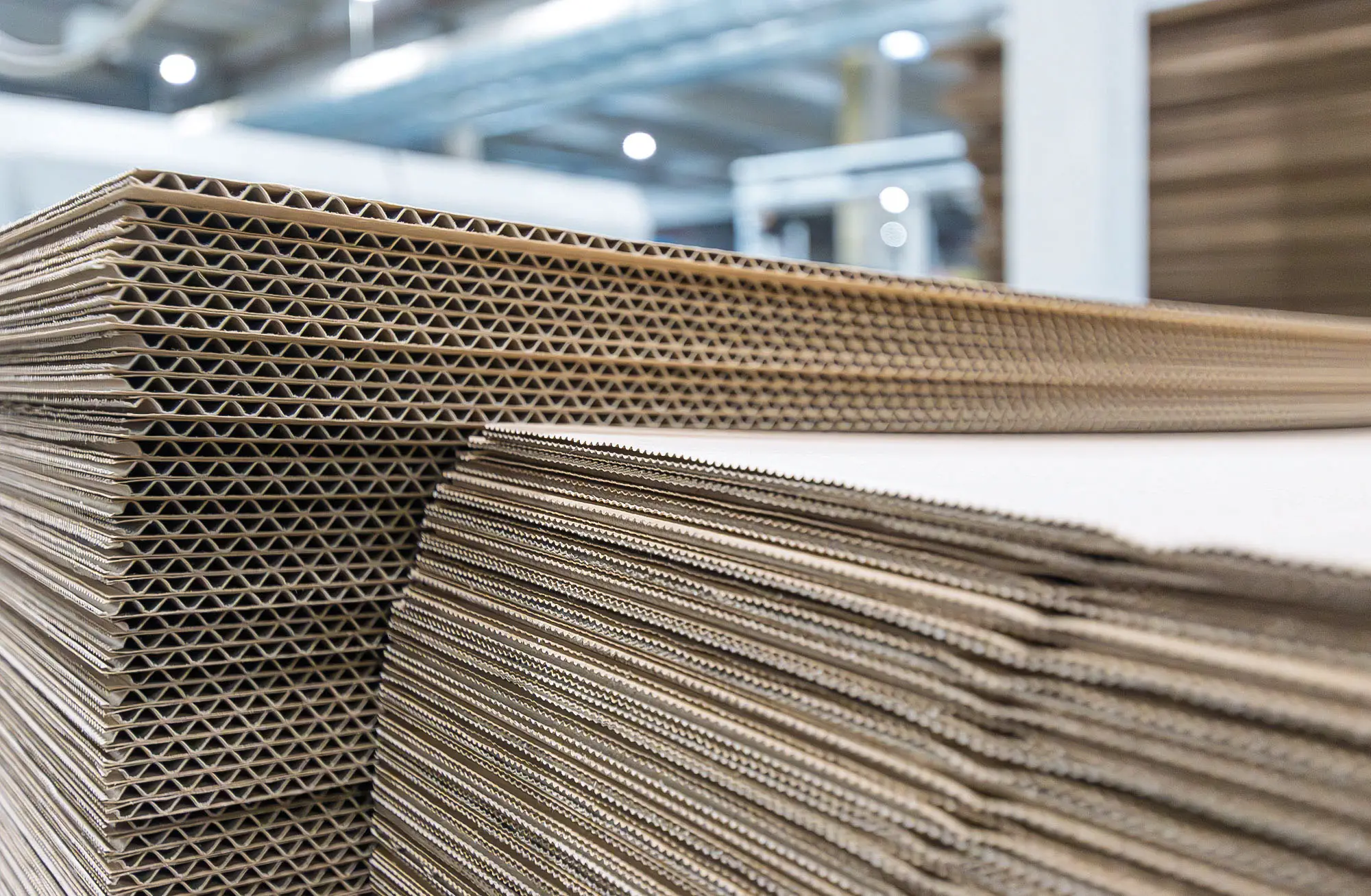We’re sure you already heard “Corrugated cardboard is one of the most sustainable packaging materials in the world”
But have you thought about what exactly is it made of?
“Ingredients”
Outer liner for protection and printing
Middle layer for strength and cushioning
Inner liner for added strength
All layers are held together with starch-based glue, which is safe and eco-friendly. As we combine more layers, we can create stronger boards. For example:
- a double-wall cardboard has five layers
- a triple-wall cardboard has seven layers
This clever layering makes corrugated cardboard strong yet lightweight and endlessly recyclable.
Inside every box is a wavy layer called a flute.
They form rigid columns inside the board that support heavy loads.
Cushion and protect contents by absorbing shock during handling.
What flutes do we use?
B
2,8 mm
Good crush resistance + flat surface for printing
C
3,8 mm
Most common, versatile strength + printability
D
2,2 mm
Middle ground between C and E, combining the good qualities of both flutes
E
1.6 mm
Thin, smooth surface (retail/high-quality print)
We can also combine flutes in double-wall boards, like EB or BC, to get the best of both worlds: smooth printing and heavy-duty strength.

Why is it important to choose the right flute?
Affect print quality and box handling, smaller flutes deliver smoother surfaces, it also influences weight, thickness, cost, and recyclability
Corrugated cardboard’s versatility allows us to make packaging that’s strong, lightweight, and recyclable, all while reducing our environmental footprint. It’s one of the reasons Pacapime has been trusted for decades to deliver packaging that’s good for both products and the planet.

